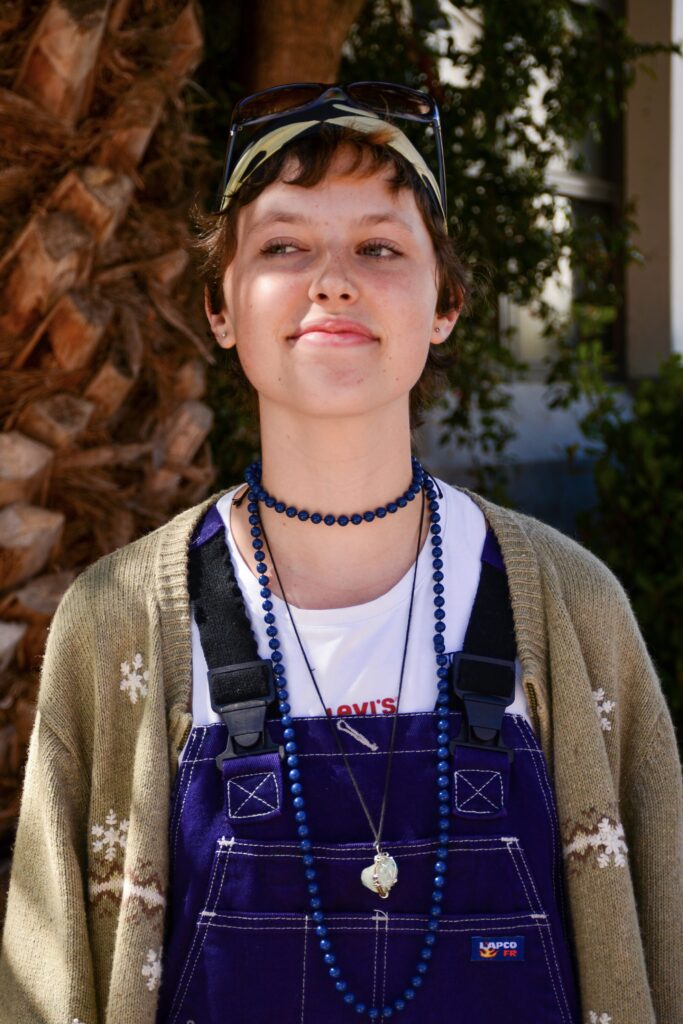“Especially as someone who has struggled with (gender) dysphoria before, I rarely feel it anymore,” said Ty Walthall, a junior at Berkeley High School. “Being able to dress in a way that I feel comfortable in has really affirmed my gender identity and made me much more comfortable with my body and who I am.”
Walthall’s everyday outfits, which feature vibrant clothes and makeup that accentuate her blue-streaked hair, are a means for her to show the relationship between gender identity and style.
The world of fashion is not perfect. Being entirely associated with harmful mass production and otherworldly price tags, ignoring the tidal wave of fashion’s ethical and social problems is almost impossible. However, despite its flaming red flags radiating the color of red toxic waste, many people still love the creativity and expression it offers. It’s a way of showing how people feel about themselves. For many BHS students, gender is central to identity and expression.
BHS junior Simone Strader described how her relationship with fashion has been a constant source of self-expression as she has grown in recent years. “I think I’ve definitely evolved in how I present myself and how I look over the years… It’s definitely related to finding and growing myself and how I look over the years… It’s definitely related to finding and growing myself more. ”
For Ty Walthall, fashion is an essential part of their queer expression.
Raspberry Meissner

As Simone Strader has grown, so has her style.
Raspberry Meissner
For many people, fashion is a useful and versatile means of expressing gender identity. It can help to create a positive sense of security and minimize gender dysphoria. However, in addition to being a vessel for one’s style, fashion can affect how students are perceived and treated by others. Are students treated differently on days when they dress more feminine than on days when they dress more masculine? The answer is reflected in the sexism, homophobia and other forms of bigotry that remain present in society. For Pele Scher-Levin, a freshman at BHS, being judged by others based on their clothing is a frequent experience.
“Clothes are a huge stereotype, so being gay, I can look more gay if I dress more feminine and less gay if I dress more masculine,” he said. Scher-Levin added that when they dress on the masculine side, they feel more accepted or respected by men, both on and off campus.
Similar to Scher-Levin, others noticed a change in the way they were treated and viewed as they dressed in a more feminine style. Many expressed that infantilization and objectification are an undeniable occurrence in our BHS community, and both become more apparent when dressed in feminine clothing.
Walthall explained that they focus less on masculinity and femininity and instead try to express their queerness.
“I’m definitely treated like a woman no matter how I dress,” Walthall said. “Even if I dress very masculine, people will assume I’m a woman… I very much present a queer identity, which I’m going for… it’s an important part of how I present myself.”
For so many students across the gender spectrum, fashion allows them to express who they are. How people interpret their look is another story, but at the end of the day, Scher-Levin will “always dress in what makes me most comfortable in my identity.”




